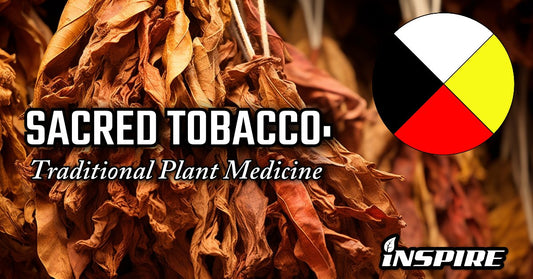INSPIRE loves dabs! Cannabis concentrates are probably one of the best products to smoke when it comes to enjoying a potent and flavorful high.
There are many benefits to smoking dabs over flower, primarily that smoking dabs produces less carcinogenic tar. Dabs are also concentrated and significantly stronger than smoking flower.

Most of the time you will see cannabis concentrates come in a variety of forms with the two most popular being Live Resin and Live Rosin.
Live resin and live rosin are both cannabis concentrates that are derived from fresh, uncured cannabis plant material. However, they differ in terms of the extraction process used and the final product characteristics.

Here's a breakdown of the differences:

EXTRACTION PROCESS:
Live Resin: Live resin is typically produced using a process called hydrocarbon extraction, where solvents like butane or propane are used to extract the cannabinoids and terpenes from the freshly harvested plant material.
The extraction process is performed at very low temperatures to preserve the volatile compounds found in the live plant, hence the name "live resin."


Live Rosin: Live rosin, on the other hand, is made using a solventless extraction method, which means no chemical solvents are used.
Instead, heat and pressure are applied to the fresh plant material, often in the form of a rosin press, to extract the cannabinoids and terpenes.
The process involves pressing the plant material between heated plates, squeezing out the resinous oils.


COMPOSITION:
Live Resin: Live resin typically contains a high concentration of both cannabinoids (like THC and CBD) and terpenes. The low-temperature extraction process used in live resin production helps to preserve the volatile terpenes, resulting in a product with robust aroma and flavor profiles.

Live Rosin: Live rosin also contains cannabinoids and terpenes, but the specific composition can vary depending on the starting material and the extraction process.
Live rosin tends to have a high terpene content, which contributes to its flavor and aroma profiles. However, live rosin may have slightly lower cannabinoid concentrations compared to live resin.

TEXTURE:
Live Resin: Live resin typically has a more viscous and syrupy texture, ranging from a sticky sauce-like consistency to a more glass-like shatter consistency. The texture can vary depending on factors such as the starting material and the purging process.

Live Rosin: Live rosin tends to have a softer and more malleable texture. It often appears in a budder-like consistency, although it can also take forms such as a cake batter or even a more stable shatter consistency, depending on the specific production methods and variables.


CONCLUSION:
Both live resin and live rosin are highly regarded for their potent flavors, aromas, and broad cannabinoid and terpene profiles.
The choice between the two ultimately comes down to personal preference, as they offer slightly different experiences in terms of texture, extraction process, and overall composition.

Make sure you always purchase your concentrates from a trusted and verified vendor, as not all dabs are the same, and many vendors will purposefully sell cut or watered down concentrate products with little knowledge about how the product is made.








